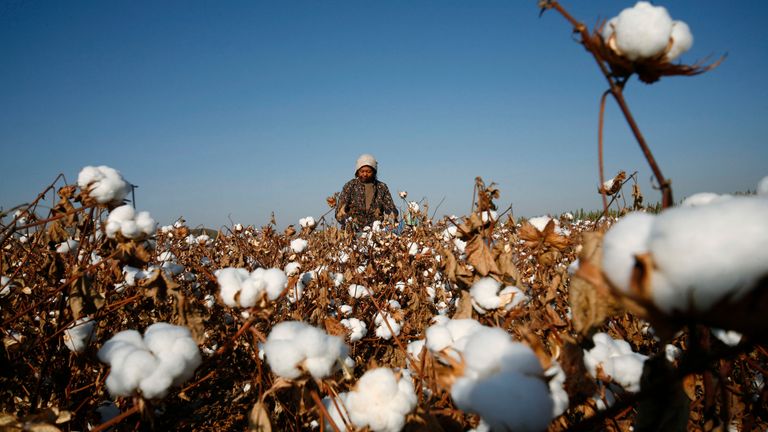Nike and H&M pay the price as China says Xinjiang forced labour is ‘nonsense’
For a spontaneous consumer boycott, it comes with a lot of government choreography.
Nike and H&M – and possibly many others by the time you read this – are facing a huge backlash in China.
Items have been pulled from sale from online stores; Chinese celebrities have cut their endorsements; smartphone map apps have even blocked search results for H&M’s stores.
The fault for both companies was to put out statements saying they prohibited forced labour in its supply chain in Xinijang.
The statements are old – in H&M’s case, more than a year. But the online mob was dizzyingly quick – and it had serious backing from state media.
Most of the furore, as Vice News reported, seems to have begun with a post on social media by the Communist Youth League on Wednesday.
Today, the rest of the state apparatus brought its guns to bear, with articles being churned out in official media. People’s Daily published a story about how domestic demand for Xinjiang cotton was so high that it couldn’t be met by the region.
The Xinhua news agency put out videos showing the cotton harvest in the region, pointing out that 95% of it is completely automated. One reporter helpfully explained: “Who needs forced labour when the cotton industry has long been mechanised in Xinjiang?”
The CCTV television channel said, woundingly: “H&M you are no longer at all fashionable.”
And both the Ministry of Foreign Affairs and the Ministry of Commerce held press conferences where they said the idea of forced labour in Xinjiang was “nonsense”.
China’s official media isn’t famous for its speed of reaction, especially the establishment People’s Daily. No doubt there is real outrage among some Chinese internet users. But there is also a great deal of co-ordination from the relevant organisations.
The “grassroots” outcry has a whiff of astroturf.
The other part of the timing here is the sanctions announced this week by Western countries on China: these were signalled long in advance. And China had spent that time working on its own response.
Whether it’s connected or not, the boycott draws a line. International corporations like H&M and Nike have been trying to ride two horses for some time, addressing Western concerns over human rights while making a lot of money in China.
Some companies are still keeping up the horseplay. Muji, the Japanese retailer, has said that it has stopped exporting Xinjiang-sourced cotton to the US but, in its Chinese stores, it makes a point to promote Xinjiang cotton products. That surely cannot last.
There’s a lot of money at stake. China is H&M’s fourth biggest market and 19% of Nike’s sales come from China.
It’s impossible to imagine Nike and H&M changing their positions on forced labour, both in terms of its corporate image but also its legal obligations: US sanctions ban products made in whole or in part with Xinjiang cotton.
This could still fizzle out. Chinese state media have insisted the boycott is merely the logic of the market. And the market may well decide they actually still quite like Nike trainers.
But this keeps happening. The NBA faced a similar boycott after a manager tweeted his support for Hong Kong protesters. The Premier League was taken off air after Mesut Ozil condemned China’s treatment of the Uighur people.
The Trump administration pursued decoupling with China through trade tariffs, unsuccessfully. But the decoupling is now happening, in the fashion industry at least – and it’s happening because of human rights.
Source: Read Full Article




